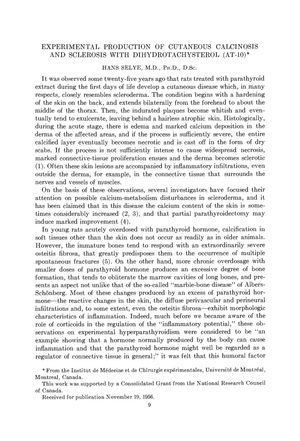Experimental Production of Cutaneous Calcinosis and Sclerosis with Dihydrotachysterol (AT-10)
July 1957
in “
Journal of Investigative Dermatology
”

TLDR Giving dihydrotachysterol to mother rats caused skin hardening and bone issues in their babies through milk.
The study involved 16 lactating Wistar rats and their offspring, which were used to investigate the effects of dihydrotachysterol (AT-10). The mother rats were orally administered AT-10, leading to scleroderma-like skin lesions and spontaneous bone fractures in the suckling young. The skin lesions progressed from swollen patches to hard plaques and eventually necrosis, with histological analysis showing heavy calcium infiltration. The skeletal changes observed included underdeveloped bones and increased osteoclast activity. The findings suggest that AT-10 intoxication can be transmitted through milk and that AT-10 has similar effects to parathyroid hormone on the skin. This research could help in understanding the pathogenesis of scleroderma in humans. The dosages used were 1.25 mg and 500 µg of AT-10 per day, and the study highlights the need for further research to explore the connection between this experimental condition and clinical scleroderma.